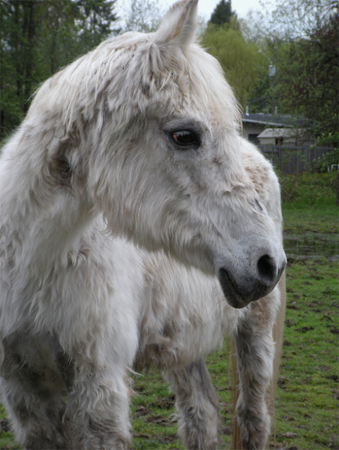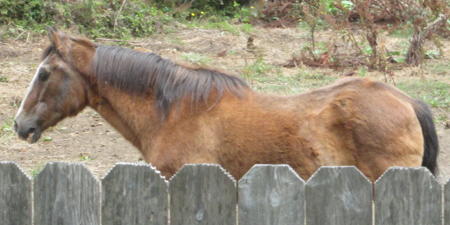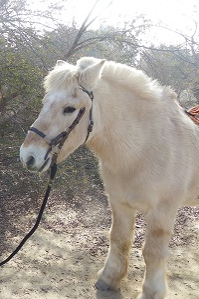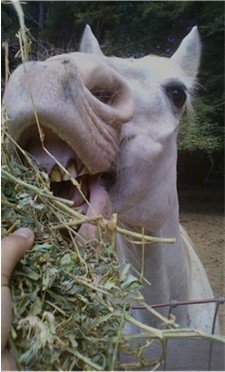Cushing's Disease in Horses Explained
Cushing's disease in horses, also known as Pituitary pars intermedia dysfunction (PPID), is a disorder of the pituitary gland. The middle lobe of the pituitary gland becomes enlarged, and in doing so, over-produces hormones. At the same time, it pushes on nearby glands causing them to under-produce hormones.
 Cushings disease in a 25 year old mare
Cushings disease in a 25 year old mareOne result can be an over production of insulin and the inability for the animal’s body to properly absorb blood sugar. This is called insulin resistance.
Although equine Cushing's disease can affect younger horses, it usually found in horses over the age of 15. Any breed of horse can develop Cushing's but it is most commonly seen in ponies and Morgans.
Symptoms of Cushing's Disease
- Excessive drinking
- Excessive urination
- Excessive sweating
- Decreased immunity to infection
- Loss of muscle
- Infertility
- Bulging eyes
- Long curly coat that refuses to shed (hirsuitism)
- Prone to laminitis
- Insulin resistance
Some of the symptoms of Cushing's disease in horses are very similar to Equine Metabolic Syndrome (EMS). They both can cause insulin resistance and both create an extremely high risk of laminitis, also known as founder. Because of the similarities, EMS has been called ‘peripheral Cushing's disease’.
Diagnosing Cushing's Disease in Horses
There are several different blood tests available to help diagnose for equine Cushing's disease. These tests are not 100% accurate, as they have been known to give false positives during certain times of the year. Early diagnosis relies on blood tests, while later diagnosis of Cushing's disease is confirmed with a combination of a blood test and the presence of hirsuitism (long curly hair). Keep in mind that hirsuitism does not show itself in the early stages of Cushing's disease.
Treatment
Currently there is no cure for Cushing's in horses. It is believed that horses with Cushing's suffer from low levels of the hormone dopamine. The drug Pergolide is used to help control the production of dopamine. Because too much Pergolide can have very ill side effects it is important to give the smallest dose necessary to get the job done. This may require several blood tests to get the dose just right. The horse will then be on the drug for the rest of their life.
 Loss of muscle with cushings
Loss of muscle with cushingsThe symptoms of Cushing's can be treated to make the animal more comfortable, starting with a specialized diet, if the horse has insulin resistance. Not every horse with Cushing's will have insulin resistance, but it is very common.
If so, it is important that the horse be feed a low sugar, low carbohydrate, low starch diet with limited access to green pasture. Your veterinarian is the best resource for developing a proper diet for a horse diagnosed with insulin resistance.
The sooner Cushing's disease in horses is diagnosed, the better chance the animal has to avoid crippling laminitis. Healthy weight control, exercise, regular dental and hoof care may play a factor in the prevention of Cushing's disease in horses.
Equine Metabolic Syndrome
Learn the difference between Equine Metabolic Syndrome (EMS) and Cushing's Disease here.
More Articles Related to Cushing's Disease:
This information is written for the horseman to better understand and cope with the variety of disease and injury that can occur during the course of horse ownership. Always consult with your Veterinarian regarding the care and treatment of your equine.
Home > Horse Diseases > Cushings Disease in Horses


